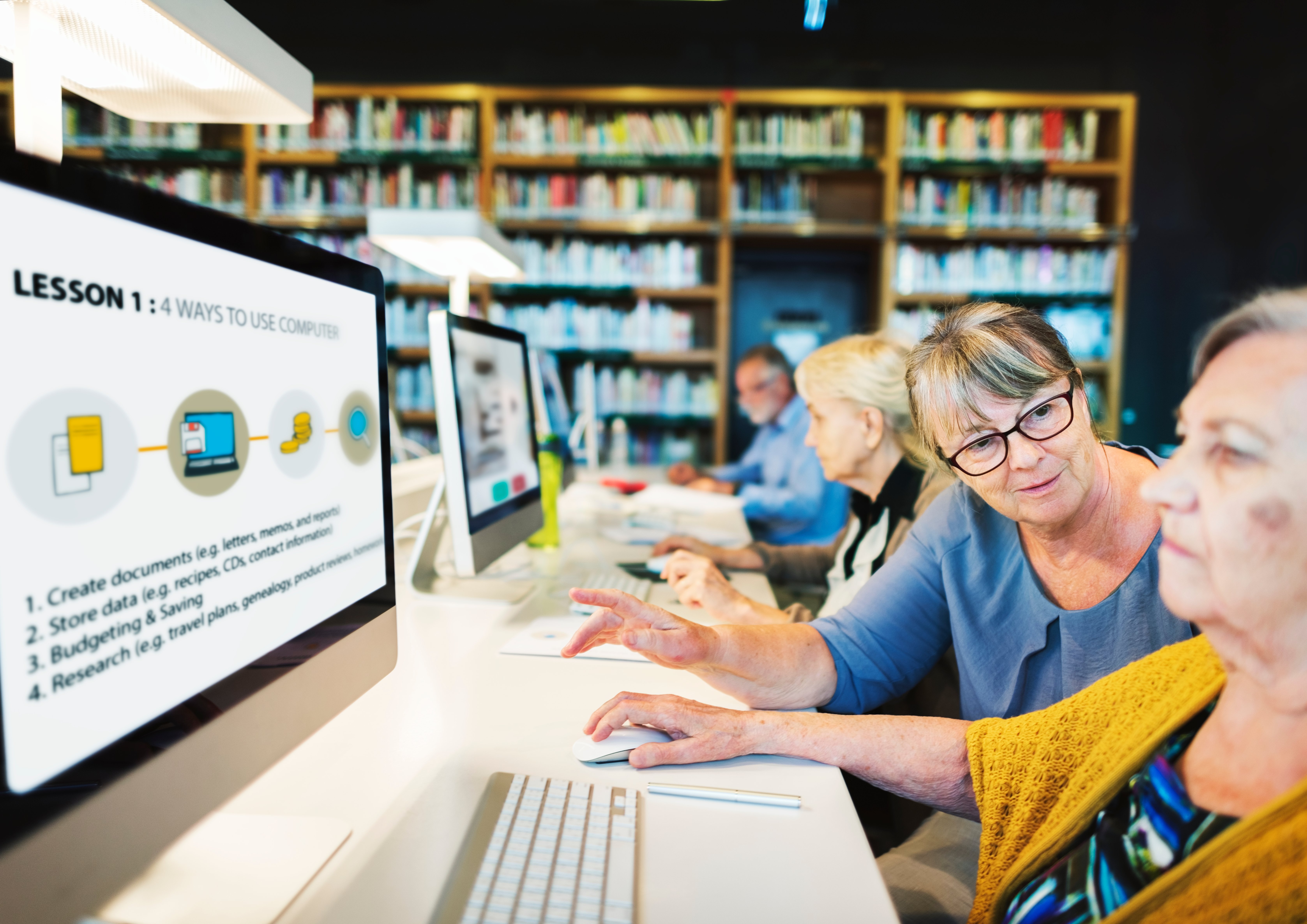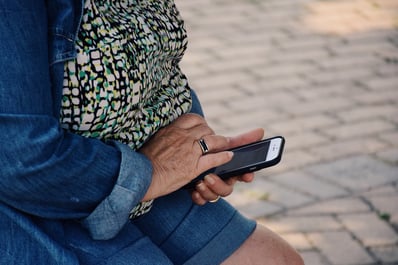Combatting digital ageism: How we can help seniors adapt
by Megan Marolf | Sep 30, 2021 | smart technology for seniors, Family caregiving, ageism | 0 Comments

We’ve all chuckled at the giant font our parents use on their phones (even if we use it too), or been guilty of telling your mom or dad to hand over their phone so you can fix the problem without explanation.
But not empowering older adults to be digitally competent can lead to digital ageism, even if that wasn’t the intention.
Today marks International Day of Older Persons, and fittingly, this year’s theme is Digital Equity for the Ages.
In 2050, the world elderly population is predicted to double to 1.5 billion elderly persons, according to the United Nations. Right now, half of the world’s population is offline, leaving a giant gap in digital equity.
How can seniors struggling with technology become more literate in the digital era?
Let’s explore some issues and solutions to digital access for seniors.
The risks of the digital gap
Cyber crimes, misinformation and scams rank as a few of the common dangers that seniors face when using technology.
In 2020, a telemarketing scam stole a total of $300 million from seniors. Be sure the senior in your life knows common signs of a telephone scam to prevent being taken advantage of.
Sharing tips and tools for how to recognize these scams can go a long way in making a senior feel confident online.
To help your loved one recognize signs of other types of scams, share watch this video with them by Humana Neighborhood Center.
Digital discrimination
With a global pandemic that forced everyone inside four walls for months at a time, the digital gap put seniors at a greater health risk. Telehealth services and grocery delivery for instance, require knowing how to book appointments online and navigate by Google.
Without these skills, some seniors had no choice but to shop at grocery stores in-person and go to in-person doctor’s appointments, or worse… avoid them.
See our tips below for making these essential services more accessible online.
Digital ageism’s impact
When seniors are made fun of or assumed to not be able to use a certain technology, that can erode their confidence, and eventually lessen their desire to learn how to use technology.
“Only one in four older Europeans have basic or above digital skills,” compared to 4 out of 5 people aged 16 to 24 according to a recent United Nations article on aging in the digital era.
Being left behind can lead to feelings of loneliness and isolation
If there’s anything we all have learned in the last year and a half of living through a pandemic, there’s no arguing the benefit of in-person communication and connection. There’s no substitute for the thing that is most important to us as a species- communication on a face-to-face level, as we explored in a past blog at the start of the pandemic about coping with loneliness.
But when those options aren’t there for reasons of health and safety or just convenience, digital connection is the next best thing.
Possessing some form of digital literacy can lead to greater independence and more social connection.
How technology can benefit seniors

From medication reminders to GPS tracking to emergency alert systems, smart technology has come a long way for the senior population.
Read our past blog on these technologies, which can be especially useful for seniors who don’t yet require caregiving but who want to live independently at home.
Making medical appointments online, such as the COVID vaccine and booster shots, can put a senior’s health in their own hands.
Ways to make the digital world more accessible to seniors

Imagine being introduced to an alternate universe after interacting with the world in a different, simpler way for most of your life.
I know I’d be completely overwhelmed!
There’s no need to make anything more complicated than it needs to be. Focus on the person’s immediate technological needs before taking them too far down a rabbit hole.
So, avoid the look of panic that we can all get when we have to learn something unfamiliar, and make it simple from the start.
Decide on a goal- Ask the senior in your life what their “digital goals” are. Do they want to be able to pay bills online, email long-distance friends, or use their tablet to FaceTime the grandchildren?
Dedicate some time to either going through the steps with the senior in your life, or working with a nonprofit like Community Tech Network to find volunteers skilled in tech literacy.
Focus on mini lessons and practicing the skill, such as booking a tele-health appointment, for that week before moving on to the next skill the following week.
Highlight the positives. Communicating online will never be as fulfilling as in-person connection, but that’s not always possible in our modern and busy lives. But being able to see photos of grandkids or a family vacation can brighten anyone’s day, and lead to a boost of connectivity.
How home care can help
SeaCare trains and educates our caregivers with tools to make technology more accessible for them and the people they’re caring for.
Our caregivers are not only equipped to help seniors operate their tech devices, but can help transfer them to appointments and provide much needed companionship.
Explore your options here.
Megan Marolf writes about senior topics and outdoor recreation from her home base in Seattle. You can read more about her here.
Resources:
https://www.noisolation.com/research/why-do-many-seniors-have-trouble-using-technology/
https://www.un.org/en/observances/older-persons-day
https://katiecouric.com/lifestyle/pandemic-digital-divide-seniors/
https://www.communitytechnetwork.org/
If you or a loved one you know are looking for additional support during this time and are interested in scheduling a free in-home assessment, please contact SeaCare In-Home Care Services today! A SeaCare family member is standing by. 425-559-4339.



0 Comments